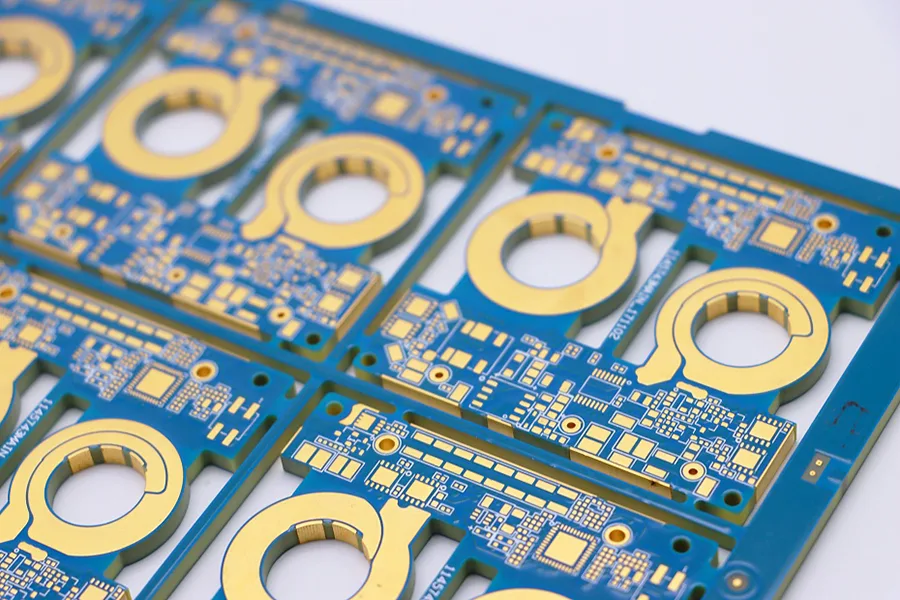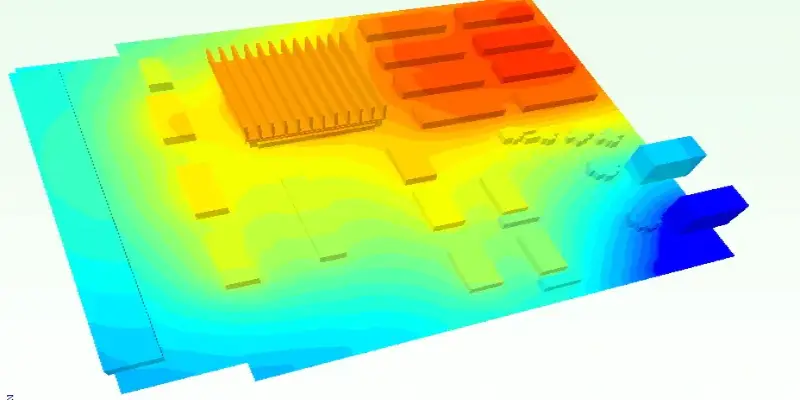In the world of electronics, power and reliability are key to success, especially in high-demand applications. If you're searching for solutions to handle high currents and ensure durability in power electronics, heavy copper PCBs are a game-changer. But what exactly are heavy copper PCBs, and how do they transform modern designs? In this comprehensive guide, we explore the unique benefits and applications of heavy copper PCBs, focusing on their role in power electronics, current carrying capacity, and high current scenarios.
Heavy copper PCBs are specialized circuit boards with thicker copper layers, typically ranging from 4 oz/ft2 to 20 oz/ft2 or more, compared to standard PCBs with 1-3 oz/ft2. This increased copper thickness allows them to carry higher currents, dissipate heat effectively, and withstand thermal stress. Whether you're designing for industrial systems, automotive electronics, or renewable energy solutions, heavy copper PCBs offer unmatched performance. Let’s dive deeper into their advantages, applications, and why they’re essential for high-power needs.
What Are Heavy Copper PCBs?
Heavy copper PCBs are printed circuit boards designed with significantly thicker copper traces and planes than standard boards. While typical PCBs use copper weights of 1 to 3 ounces per square foot, heavy copper boards start at 4 ounces and can go up to 20 ounces or higher in extreme cases. This added copper thickness enhances the board's ability to handle high electrical currents and improves its mechanical strength.
The primary purpose of using heavy copper is to address challenges in power electronics where standard copper layers would fail due to overheating or insufficient current capacity. By increasing the copper thickness, these boards can support current loads that would otherwise require multiple layers or wider traces on a standard PCB. This makes them ideal for applications where space is limited, yet power demands are high.

Key Benefits of Heavy Copper PCBs for Power Electronics
Heavy copper PCBs bring several advantages to the table, especially when it comes to power electronics. Below, we break down the core benefits that make them a top choice for engineers working on high-power designs.
1. Enhanced Current Carrying Capacity
One of the standout features of heavy copper PCBs is their superior current carrying capacity. The thicker copper layers allow these boards to handle much higher currents without overheating or degrading. For instance, while a standard 1 oz/ft2 copper trace might safely carry around 1-2 amps per 10 mils of width at a temperature rise of 10°C, a 4 oz/ft2 heavy copper trace can manage approximately 4-8 amps under similar conditions, depending on the design and cooling.
This makes heavy copper PCBs a critical component in applications where high current loads are common, ensuring reliability and preventing failures due to thermal overload. For engineers designing systems with significant power demands, this capability translates to safer and more efficient designs.
2. Superior Heat Dissipation
Heat management is a major concern in power electronics, where components often generate substantial thermal energy. Heavy copper PCBs excel in dissipating heat thanks to the larger cross-sectional area of copper, which acts as a heat sink. This reduces the risk of hotspots that can damage components or reduce the lifespan of the board.
For example, in a power supply circuit handling 50 amps, a heavy copper PCB with 6 oz/ft2 can keep temperature rises below critical thresholds, maintaining performance even under continuous operation. This thermal efficiency is vital for maintaining system stability in demanding environments.
3. Increased Mechanical Strength
Beyond electrical performance, heavy copper PCBs offer improved mechanical durability. The thicker copper layers provide additional strength at connector points and plated-through holes (PTH), reducing the likelihood of cracks or failures during assembly or operation. This robustness is especially valuable in applications subject to vibration or mechanical stress, such as automotive or industrial equipment.
Heavy Copper PCB Applications in High Current Scenarios
Heavy copper PCBs shine in environments where high current and power are non-negotiable. Let’s explore some of the most common applications where these boards are indispensable, particularly focusing on high current needs and power electronics.
1. Power Electronics and Converters
In power electronics, heavy copper PCBs are widely used in devices like inverters, converters, and power supplies. These systems often deal with currents ranging from tens to hundreds of amps, requiring robust current carrying capacity. Heavy copper ensures that the board can handle these loads without excessive voltage drops or thermal issues.
For instance, in a DC-DC converter for industrial machinery operating at 48V and 100A, a heavy copper PCB with 10 oz/ft2 can maintain low resistance (often below 1 mΩ per trace segment) and keep heat generation in check. This reliability is crucial for continuous operation in critical systems.
2. Automotive and Electric Vehicles (EVs)
The automotive industry, especially with the rise of electric vehicles, relies heavily on heavy copper PCBs for high current applications. These boards are used in battery management systems (BMS), motor controllers, and charging infrastructure, where currents can exceed 200A in peak conditions.
The ability of heavy copper to manage such high currents while enduring thermal cycles and vibrations makes it ideal for automotive designs. A typical EV battery pack might use a heavy copper PCB to distribute power efficiently, ensuring minimal energy loss and maximum safety.

3. Renewable Energy Systems
Renewable energy solutions, such as solar inverters and wind turbine controllers, also benefit from heavy copper PCBs. These systems often convert and manage high power levels, requiring boards that can sustain continuous high current flow. A solar inverter handling 5kW of power, for example, might require traces capable of carrying 50A or more, a task well-suited for heavy copper designs with 6-8 oz/ft2 thickness.
Additionally, the heat dissipation properties of heavy copper help maintain performance in outdoor environments where temperature fluctuations are common, ensuring long-term reliability.
4. Industrial Equipment and Machinery
Heavy copper PCBs are a staple in industrial applications, powering heavy machinery, motor drives, and control systems. These environments often involve high current demands and harsh conditions, making durability and performance critical. For example, a motor drive circuit operating at 100A benefits from a heavy copper PCB’s ability to minimize resistance and prevent overheating, even during extended use.
Design Considerations for Heavy Copper PCBs in High Current Applications
While heavy copper PCBs offer impressive benefits, designing them for high current applications requires careful planning. Here are some key considerations to ensure optimal performance in power electronics.
1. Trace Width and Thickness
The width and thickness of copper traces directly impact the current carrying capacity. Engineers must calculate the required trace dimensions based on the expected current load and acceptable temperature rise. For example, a 10 oz/ft2 copper trace that is 100 mils wide might handle 50A with a 20°C temperature rise, but narrowing the trace could increase resistance and heat.
Using design tools to simulate current density and thermal performance can help optimize trace layouts for heavy copper boards, ensuring they meet the demands of high current applications.
2. Thermal Management
Even with heavy copper’s excellent heat dissipation, additional thermal management strategies may be necessary for extreme conditions. Incorporating heat sinks, thermal vias, or forced air cooling can further reduce temperature rises in power electronics. For instance, adding thermal vias under high-power components on a 6 oz/ft2 board can lower junction temperatures by 10-15°C, enhancing reliability.

3. Manufacturing Challenges
Heavy copper PCBs are more complex to manufacture than standard boards due to the thicker copper layers. Etching and plating processes must be precisely controlled to avoid defects like under-etching or uneven copper distribution. Working with a trusted manufacturer who specializes in heavy copper designs ensures that the final product meets the required specifications for high current and power needs.
Why Choose Heavy Copper PCBs for Your Next Project?
When it comes to power electronics and high current applications, heavy copper PCBs offer a unique combination of performance, reliability, and durability. Their ability to handle significant current loads—often exceeding 100A in industrial or automotive systems—while managing heat and maintaining structural integrity makes them a top choice for demanding designs.
Whether you’re developing a high-power inverter for renewable energy or a robust motor controller for industrial machinery, heavy copper PCBs provide the foundation for success. By leveraging their enhanced current carrying capacity and thermal properties, you can create systems that operate efficiently and withstand the rigors of real-world use.
Conclusion: Powering the Future with Heavy Copper PCBs
Heavy copper PCBs are unlocking new possibilities in power electronics, offering unparalleled current carrying capacity and reliability for high current applications. From automotive systems to renewable energy and industrial machinery, these boards are at the heart of modern power solutions, ensuring efficiency and durability where it matters most.
By understanding the benefits and design considerations of heavy copper PCBs, engineers can make informed decisions to enhance their projects. With the right approach, these specialized boards can help you meet the challenges of high-power designs, delivering performance that stands the test of time. If you’re ready to take your power electronics to the next level, consider the potential of heavy copper PCBs as your foundation for success.



